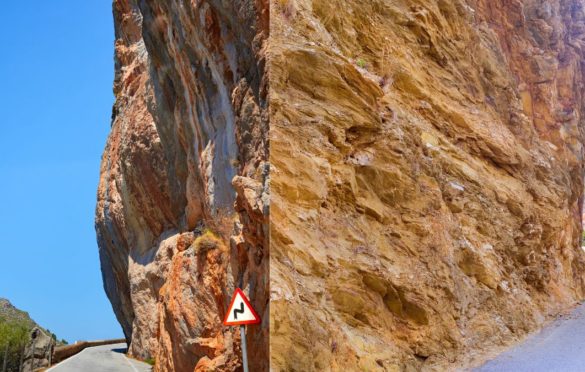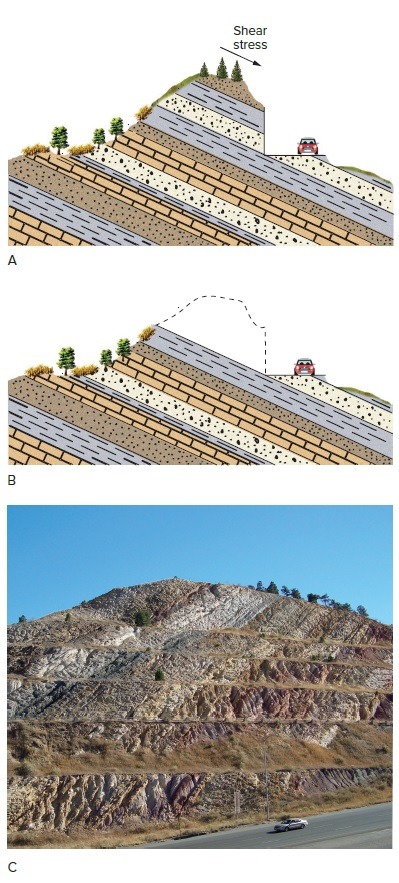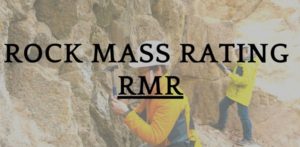Slope Stabilization

How to Slope Stabilization? If a slope is too steep to be stable under the load it carries, any of the following steps will reduce slide potential: (1) reduce the slope angle, (2) place additional supporting material at the foot of the slope to prevent a slide or flow at the base of the slope, or (3) reduce the load (weight, shearing stress) on the slope by removing some of the rock or soil (or artificial structures) high on the slope (figure 1).

These measures may be used in combination. Depending on just how unstable the slope, they may need to be executed cautiously. If earthmoving equipment is being used to remove soil at the top of a slope, for example, the added weight of the equipment and vibrations from it could possibly trigger a landslide.
To stabilize exposed near-surface soil, ground covers or other vegetation may be planted (preferably fast-growing materials with sturdy root systems). But sometimes plants are insufficient, and the other preventive measures already described impractical, in a particular situation. Then, retaining walls or other stabilization structures can be built against the slope to try to hold it in place (figure 2).

(C) Here in the Colorado Rockies, chain-link fencing draped over a roadcut won’t prevent rockfalls, but it will keep the falling rocks at the edge of the road, minimizing danger to motorists. (D) Not far from (C), more-serious slope-stabilization efforts involve concrete blocks bolted into the hillside.
Given the distribution of stresses acting on retaining walls, the greatest successes of this kind have generally been low, thick walls placed at the toe of a fairly coherent slide to stop its movement. High, thin walls havebeen less successful (figure 3).

Since water can play such a major role in mass movements, the other principal strategy for reducing landslide hazards is to decrease the water content or pore pressure of the rock or soil.
This might be done by covering the surface completely with an impermeable material and diverting surface runoff above the slope. Alternatively, subsurface drainage might be undertaken. Systems of underground boreholes can be drilled to increase drainage, and pipelines installed to carry the water out of the slide area (figure 4).

All such moisturereducing techniques naturally have the greatest impact where rocks or soils are relatively permeable. Where the rock or soil is fine-grained and drains only slowly, hot air may be blown through boreholes to help dry out the ground. Such moisture reduction reduces pore pressure and increases frictional resistance to sliding.
Other slope-stabilization techniques that have been tried include the driving of vertical piles into the foot of a shallow slide to hold the sliding block in place. The procedure works only where the slide is comparatively solid (loose soils may simply flow between piles), with thin slides (so that piles can be driven deep into stable material below the sliding mass), and on low angle slopes (otherwise, the shearing stresses may simply snap the piles). So far, this technique has not been very effective.
The use of rock bolts to stabilize rocky slopes and, occasionally, rockslides has had greater success (figure 5). Rock bolts have long been used in tunneling and mining to stabilize rock walls. It is sometimes also possible to anchor a rockslide with giant steel bolts driven into stable rocks below the slip plane. Again, this works best on thin slide blocks of very coherent rocks on low-angle slopes.

Procedures occasionally used on unconsolidated materials include hardening unstable soil by drying and baking it with heat (this procedure works well with clay-rich soils) or by treating with portland cement. By far the most common strategies, however, are modification of slope geometry and load, dewatering, or a combination of these techniques. The more ambitious engineering efforts are correspondingly expensive and usually reserved for large construction projects, not individual homesites.
Determination of the absolute limits of slope stability is an imprecise science. This was illustrated in Japan in 1969, when a test hillside being deliberately saturated with water unexpectedly slid prematurely, killing several of the researchers.
The same point is made less dramatically every time a slope stabilization effort fails.





